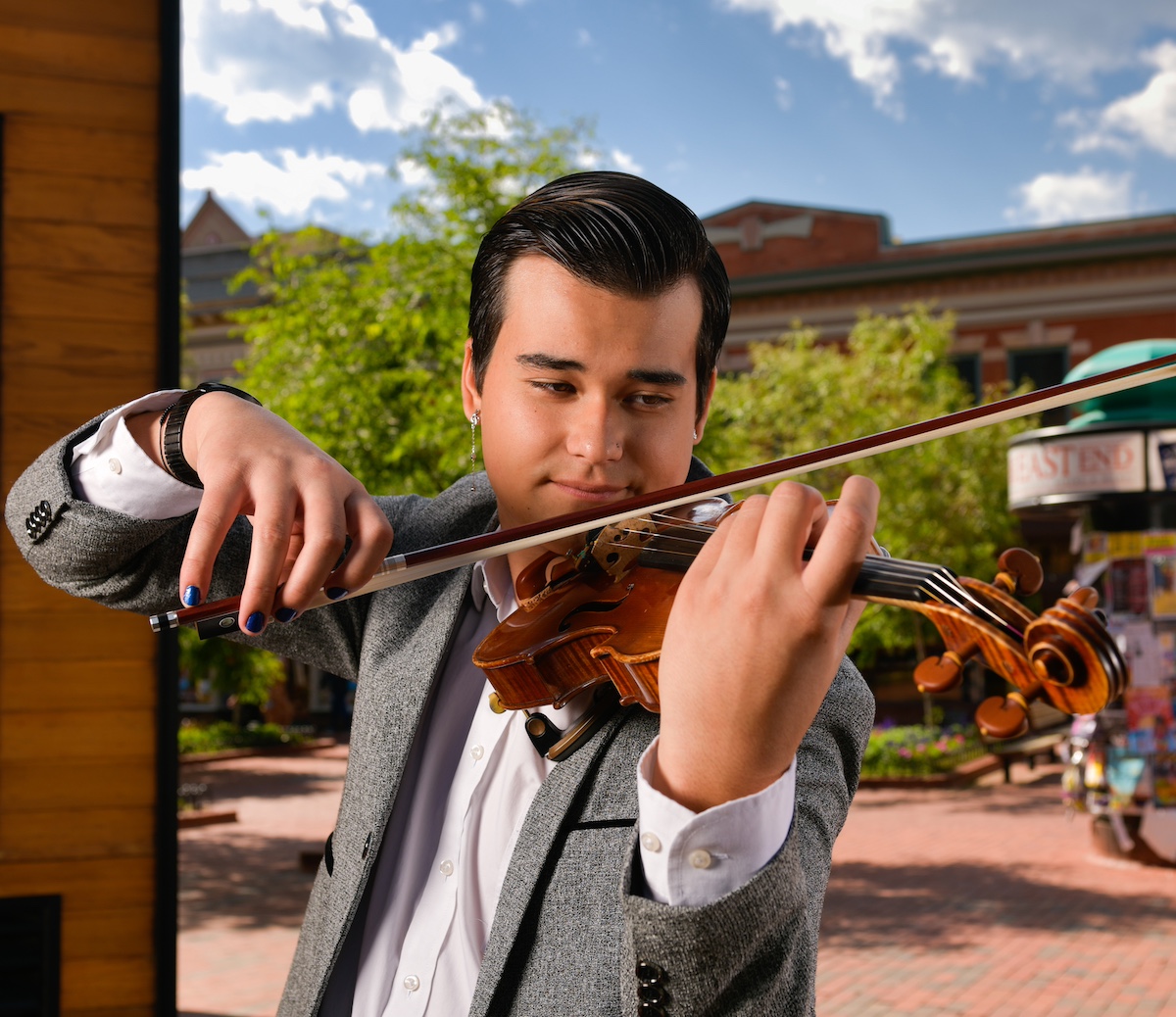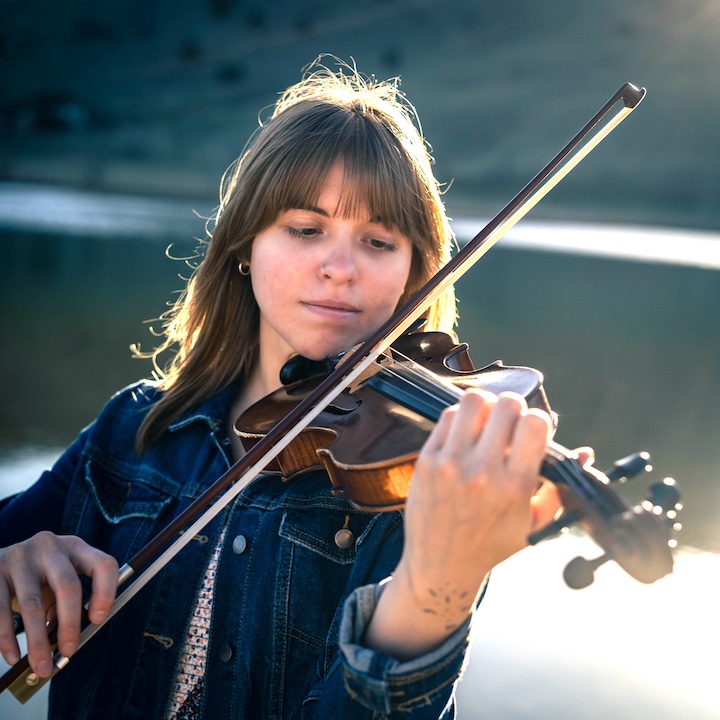
Violin Teachers in Boulder
Our Violin Teachers

Logan Indge is a Colorado-based violinist, violist, and dedicated music educator with a passion for inspiring musicians of all ages. A recent graduate of the University of Colorado Boulder’s College of Music, he holds dual Bachelor’s degrees in Violin Performance and Music Education, with a specialization in string education. His studies were shaped by esteemed mentors, including Alex Gonzalez, Claude Sim, Erika Eckert, Dr. Renee Gilliland, and Dr. Meta Weiss. With over 14 years of performance experience and 8 years of private teaching, Logan o... Read More
Daniel Florez is a guitarist with 16 years of playing experience with experience on other instruments such as piano, violin, and trumpet. In his time away from teaching, Daniel works as Audio Mocha, a solo project for creating surf rock and Latin arrangements of popular and video game music and has performed in multiple conventions around the country. He was a computer programming and mathematics tutor in college and teaches after-school classes for kindergarten to second-grade students for teaching the basics of rhythm and music. Daniel's pass... Read More


Inga Well-Off-Man (Chippewa/Cree) is a violinist currently based in Boulder but originally hails from Havre, MT. She received her Master’s degree in Violin Performance and Pedagogy from the University of Colorado-Boulder and her Bachelor’s in Instrumental Music Education from Oklahoma City University. Her violin journey began when she was 10. Throughout her musical life, she encountered impactful teachers which ultimately inspired her to pursue a career in teaching. Her teaching philosophy is to meet students where they are at. Lessons are at t... Read More
How Our Violin Lessons Work
Book a $25 Intro Violin Lesson
The teacher comes to you
(we also offer virtual lessons)
Decide to continue
Enjoy weekly lessons all month long
Receive an invoice at the end of the month
All about Violin Lessons
Violin Lessons:
Violin is a challenging but fulfilling instrument to learn. When played well, it has a sweet and enchanting sound and can span many different genres. The violin, sometimes known as the fiddle, is a string instrument. Most violins have a hollow wooden body. The violin is the soprano instrument in the violin family. It typically has four strings, usually tuned in perfect fifths and most commonly played by drawing a bow across the strings. It can also be plucked by the player’s fingers.
Violins are important instruments in many styles of music. Everything from Western Classical Music to folk music and even country/bluegrass music. A student learning to play the violin will have ample opportunity to perform in many different music settings.
Violin History:
The first violins emerged in Northern Italy in the early 1600th century. Starting in 1530 the word ‘violin’ began to appear in documents spread all around Northern Italy. While no instruments from the first decades of the century survive, there are several representations in paintings. String instruments of approximately 300 years of age, especially made by Stradivari and Guarneri are the most sought after instruments, for both collectors and performers.
In addition to the skill and reputation of the maker, an instrument’s age can influence both an instrument’s price and quality. A person who makes or repairs string instruments is called a Luthier. Some of the most famous luthiers lived between the early 16th and 18th centuries, and include the Amati Family, the Guarneri Family and Antonius Stradivarius.
The different parts of the violin are usually made from different types of wood. Three types of wood that are the most common in violin making are Spruce for the top, Maple for the back and scroll, and Ebony for the fingerboard, pegs and tailpiece.
Typically the top, or the instrument’s soundboard is made from quarter sawn spruce, book-matched at a strongly glued joint down the center. The top also has two sound holes, or “F” holes from their resemblance of the stylized letter F. The sound holes allow the box to breathe as it vibrates. A decorative inlaid set of three narrow wooden strips called purfling, runs around the edge of the top. It is said to give some resistance to cracks that originate on the edge. It is also claimed to allow the top to flex more, independently of the rib structure.
The back and ribs are typically made of maple. Most often with a matching stripe figure called flame. Backs may be one piece or a bookmatched two piece quarter sawn. Backs are also purfled, but in their case, the purfling is less important than the top. Some fine old violins have scribe or painted purfling, rather than inlay purfling on the back.
The neck is usually maple, with a flame figure compatible with that of the back and ribs. It carries the fingerboard, typically made of ebony, but often in less expensive instruments some other wood is used by staining or painting it black. Ebony is considered the preferred material because of its hardness, beauty and superior resistance to wear. Some very old violins were made with maple fingerboard carrying a veneer of ebony.
The scroll at the end of the pegbox provides essential mass to tune the fundamental body resonance of the instrument. And provides a convenient grip for spare fingers to brace against when tuning one handed, with the violin on the shoulder. Some scrolls are carved representations of animal or human heads, instead of the classical spiral shape normally seen.
How high can the price of a violin go? There is no limit… trust me. Many of the world's most expensive violins are Stradivarius and Guarneri instruments. High wood quality, unique designs, pleasant tones and the fame of being played by celebrated players are some of the factors that make them expensive. For example the Stradivarius Taft is worth $1,326,000!
Our Favorite Violin Players:
Joshua Bell: Summertime
Stuff Smith: Bugle Call Blues
Regina Carter: Tiny Desk Concert

